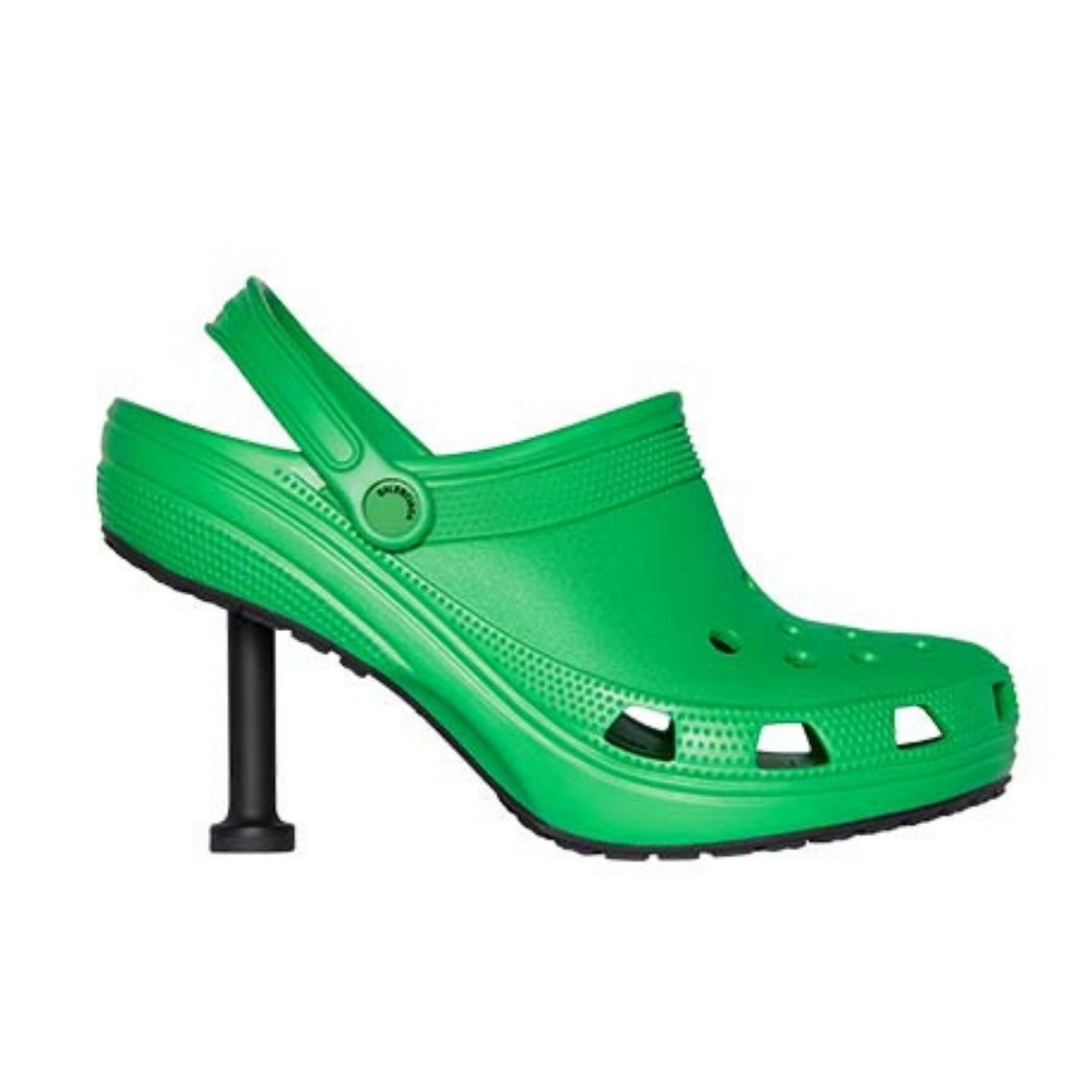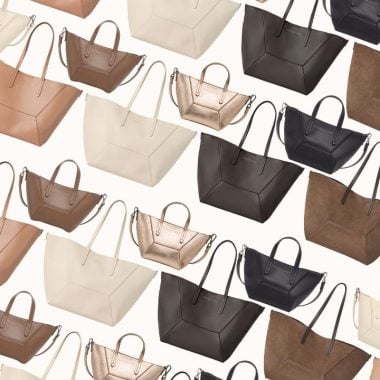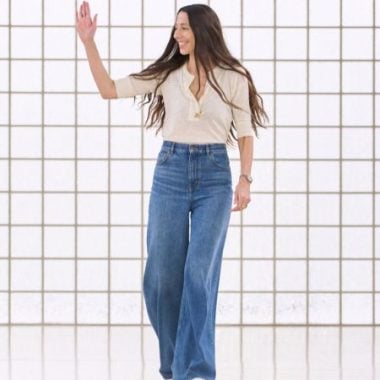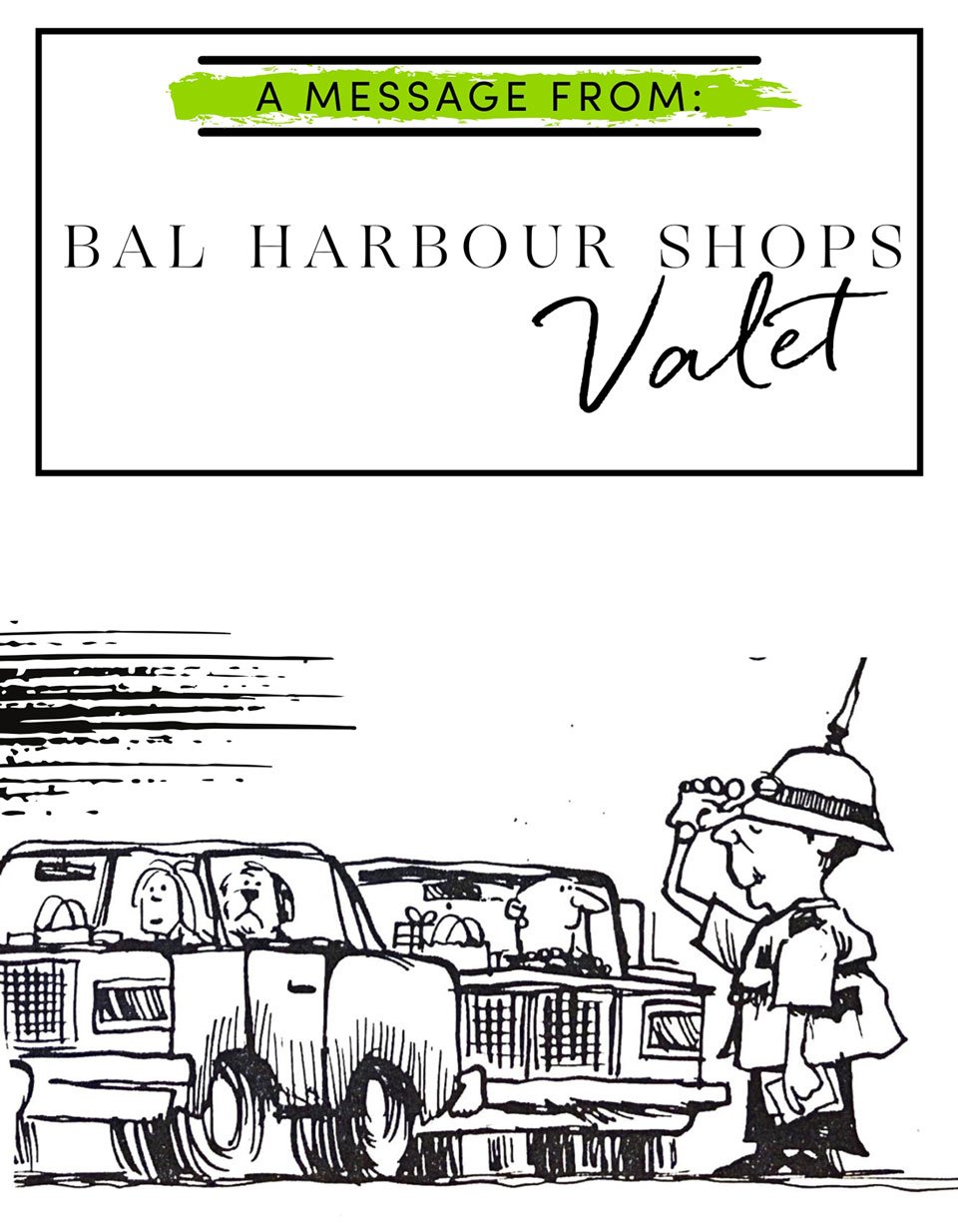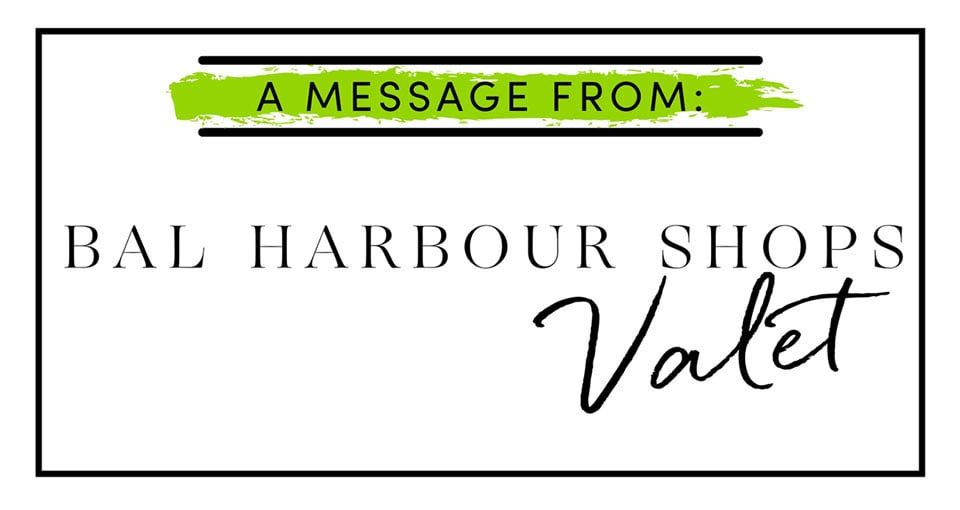By Nick Remsen
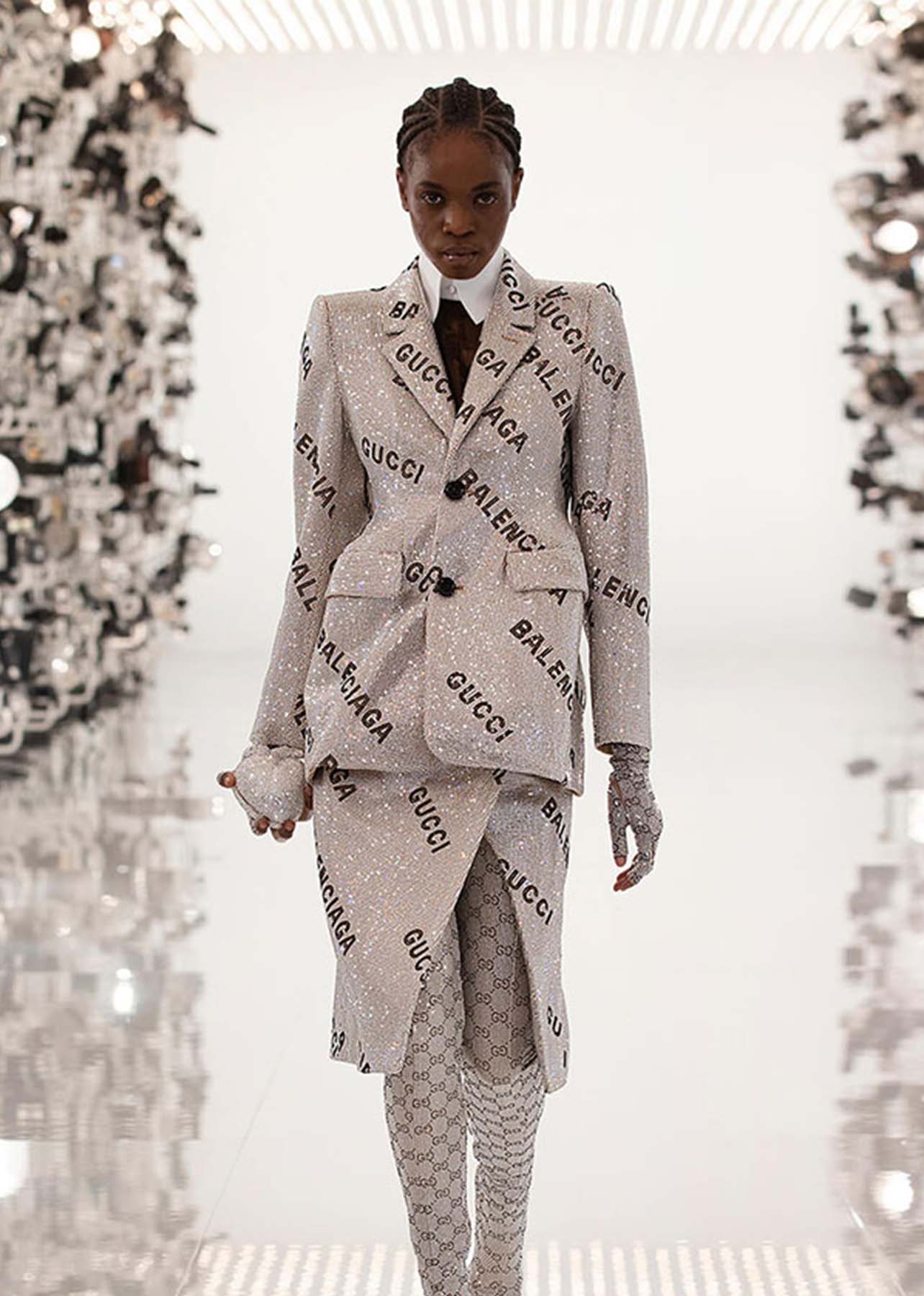
One of the most celebrated looks from Gucci’s Aria collection featured both Gucci and Balenciaga insignias. Photo by Greg Avenel, courtesy of Gucci.
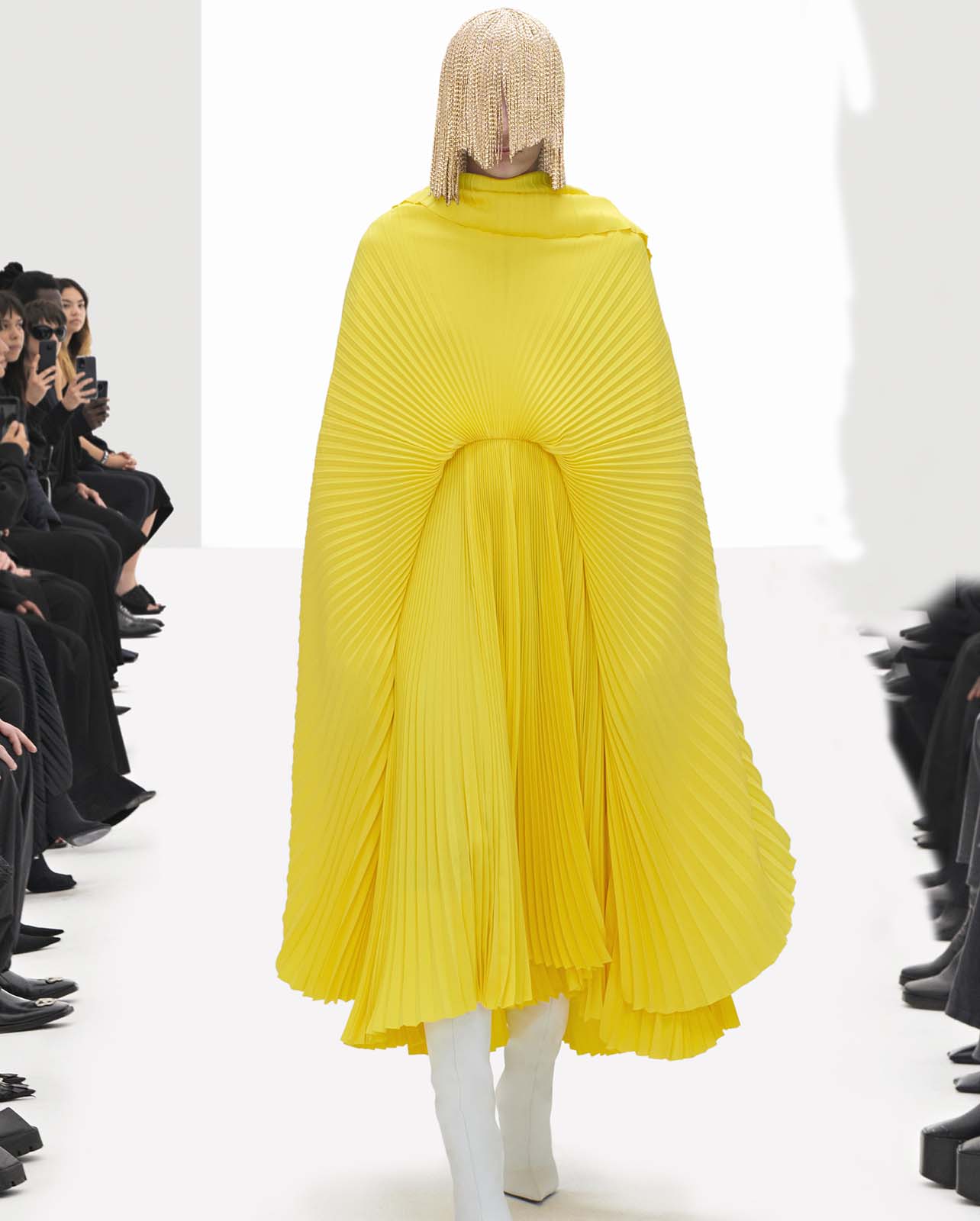
A look from Balenciaga’s Spring/Summer 22 collection.
About a third of the way through Gucci’s Fall/Winter 2021 film, the (very catchy) song “Gucci Flip Flops” by Bhad Bhabie ripples through the room. It is one of multiple audio clips spliced across the show’s soundtrack that makes use of the word “Gucci.” As the collection—titled Aria—is revealed, paparazzi-style strobe lights blink and click along the length of the catwalk (which was built at Rome’s famed Cinecittà Studios), following the models. The video is neo-classic Gucci, packed with creative director Alessandro Michele’s penchant for quirky magpie plot lines and splashy look-at- me glamour.
Yet glamour is de facto, considering we’re talking about one of the world’s most recognized fashion labels. What really made this collection shine was its newfound take on the art of collaboration: in it, Michele “hacked” Balenciaga, Gucci’s sister brand under the holding company Kering. See, for example, a pair of thigh high boots printed with Gucci’s timeless garden motif—for Fall/ Winter, the flora is overlaid with Balenciaga’s text logo. There’s Balenciaga’s signature Hourglass bag, rendered with Gucci’s double-G monogram. And, arguably, the lineup’s marquee hit is a disco-ball sequined blazer-and-skirt set with both brands’ monikers spelled out in black glitter.
In a promo for the collection, Michele says he was speaking with Balenciaga’s creative lead, Demna Gvasalia, a few months before production got under way. “I said, ‘can you imagine if instead of sending Gucci bags down the runway, I sent out bags from another brand?’”
Counterintuitive risks can go a long way in a field that has historically played it safe when it comes to disrupting the status quo. The reception around Gucci Aria was frenzied; it stirred up a massive amount of interest from a bored and largely still-in-lockdown world. The last time that happened, in this writer’s opinion, was when Louis Vuitton collaborated with the skate-centric brand Supreme in 2017.
All of the above raises a few key points as to what makes Michele so shrewd, and what, in general, brands need to do to have their voices heard above the rest. Luxury labels may still gain significant traction with unexpected partners, even though collaborating (usually with an artist or a musician) is now commonplace. They can also benefit from hyper-branding; for better or worse, we live in a day and age when social media and digital presentation governs how we dress. Celebrity stylists are thinking more about image proliferation across Instagram; designers are creating evermore innovative look books (the couturier Iris Van Herpen, for example, shot her most recent collection on a free-falling professional skydiver). Michele’s twisted, brilliant point is that perhaps wearing something printed with the word Gucci may no longer be enough to turn heads. But Gucci and Balenciaga? Now we’re looking. Score your runway for those pieces with popular songs that underline Gucci’s cultural power? Now we’re looking and listening.
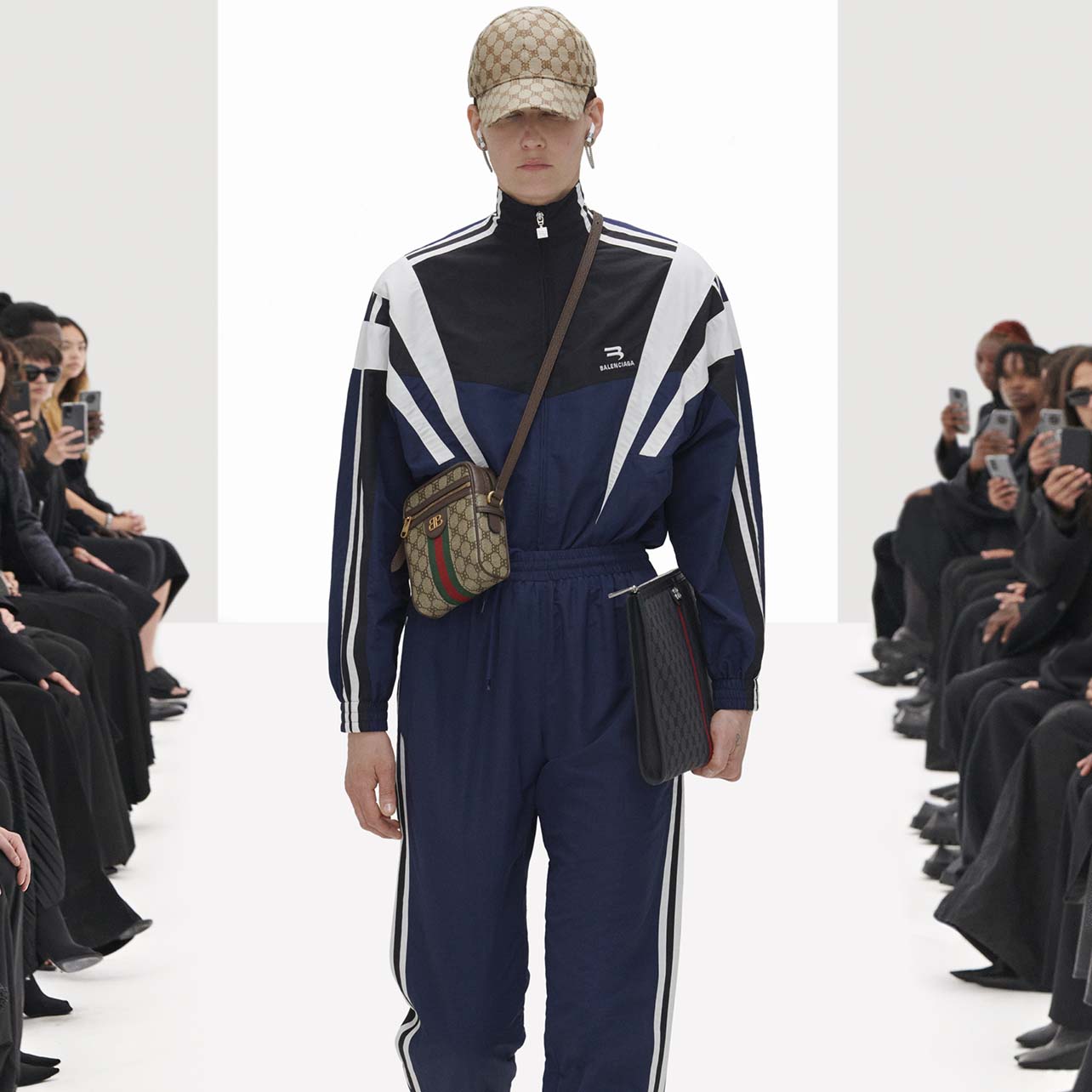
A look from Balenciaga’s Spring/Summer 22 collection.
Last year there were a number of brands that have implemented strong and, in fact, surprising collaborations. The swimwear label Vilebrequin recently collaborated with media platform High Snobiety, which reports on streetwear, trends, hype-driven apparel and sneakers. Missoni blended its bohemian-traditional aesthetic with the edgier Palm Angels. Fendi tapped a New York-based creative named Sarah Coleman for its Vertigo collection, featuring wavy double-F’s that leave the viewer feeling a bit dizzy. At Prada, Miuccia Prada is collaborating with Raf Simons (he is listed as “co-creative director”). Zegna has run a successful collaboration with the Los Angeles-based label Fear of God. And of course, for Spring/Summer 2022, Balenciaga flipped the script on Gucci; in that collection, Gvasalia took the aforementioned double-G monogram, for example, and redesigned it with double-B’s.
It can be a lot to sift through, and, for fashion design purists, all of the logomania and overtness may well be a detractor. But ultimately, Michele and Gvasalia’s synergistic move has further underscored that luxury is no longer a grand theater partitioned by gilded circles. Fashion brands that see themselves as part of, as opposed to above, popular culture are the ones succeeding; they’re the ones changing the so-called game. Plus, it’s always worth remembering that, really, there are no rules when it comes to outside-the-box-thinking. As Michele says, “fashion is a wonderful illusion.”
Images courtesy of Gucci and Balenciaga.


